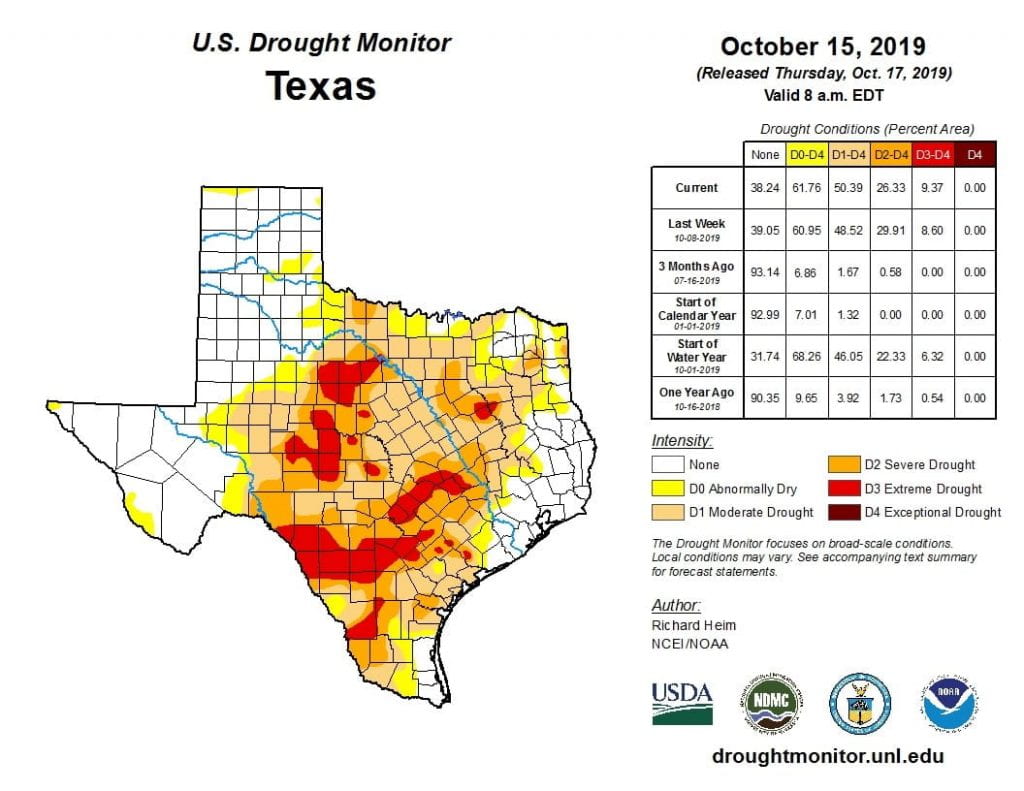SUMMARY:
-
September was the warmest on record for Texas.
-
The High Plains and Southeast Texas are out of drought, but about 50 percent of Texas remains in an intensifying drought.
-
Drought conditions are expected to persist for much of the state through at least January.
I wrote this article on October 20, 2019.
Just as we were contemplating digging a small pit to gravity drain the last drops out of our 5,000-gallon rainwater harvesting tank in Austin, we finally benefitted from a (short-lived) cold front and the first inch of rain we’d gotten since late spring. This past July through September was the fifth driest on record for Austin with only 2011, 1993, 1956, and 2015 being drier. As more cold fronts wash across the country, we hope to benefit from lower evapotranspiration rates and rainfall.
The High Plains received needed relief from drought over the past month, but much of the rest of the state—with higher-than-normal temperatures and lower-than-normal rainfall—is still waiting for summer to end. This past September was the hottest on record for Texas with temperatures 5.6°F warmer than normal. For the country and the globe, September was the second warmest on record.
Parts of Southeast Texas, the High Plains, and Far West Texas received five or more inches of rain with much of the rest of the state receiving two inches or less over the past month (Figure 1a). Rainfall in the High Plains and Far West Texas over the past 30 days exceeded three times the normal amount while most of the rest of the state received less than normal amounts of rainfall with large areas seeing less than 25 percent of normal (Figure 1b). Looking over the past 90 days, most of the state is still experiencing a rainfall deficit with the central part of the state receiving less than 50 percent of normal rainfall (Figure 1c). In general, percent-of-normal precipitation for the past 90 days correlates well with the Drought Monitor and can be used to discern areas going into (or out of) drought.

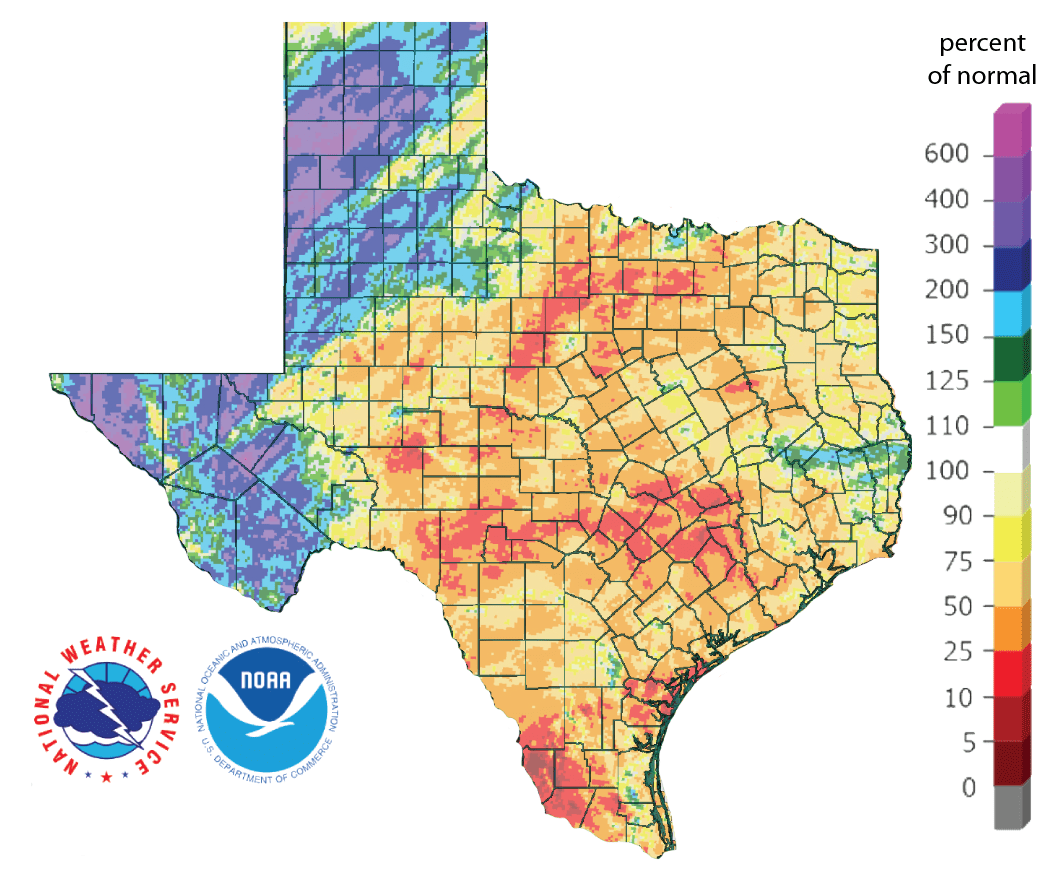

Drought coverage remained about the same in the state with 52 percent a month ago and 50 percent today with 62 percent of the state either abnormally dry or in drought (Figure 2a). Recent rainfalls have removed drought in the High Plains and Houston area, but drought intensity has generally worsened across the central part of the state with pockets of extreme drought splattered across our midriff like a scene from the Texas Chainsaw Massacre (Figure 2b).
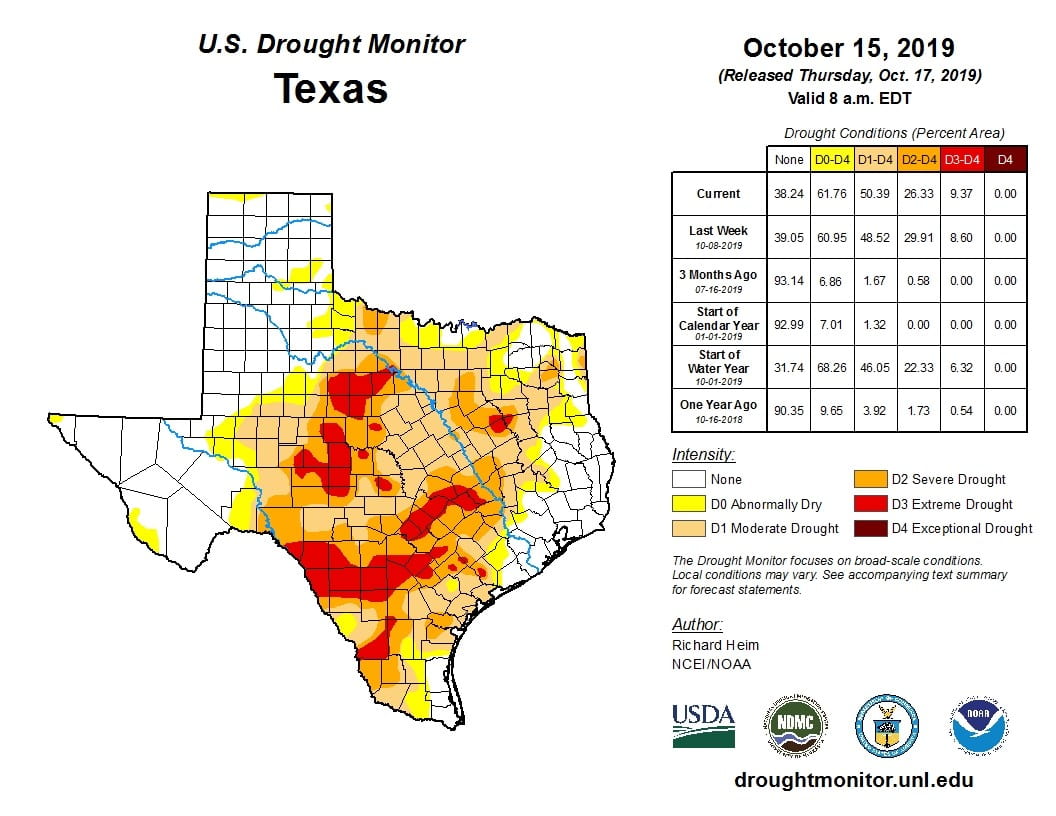
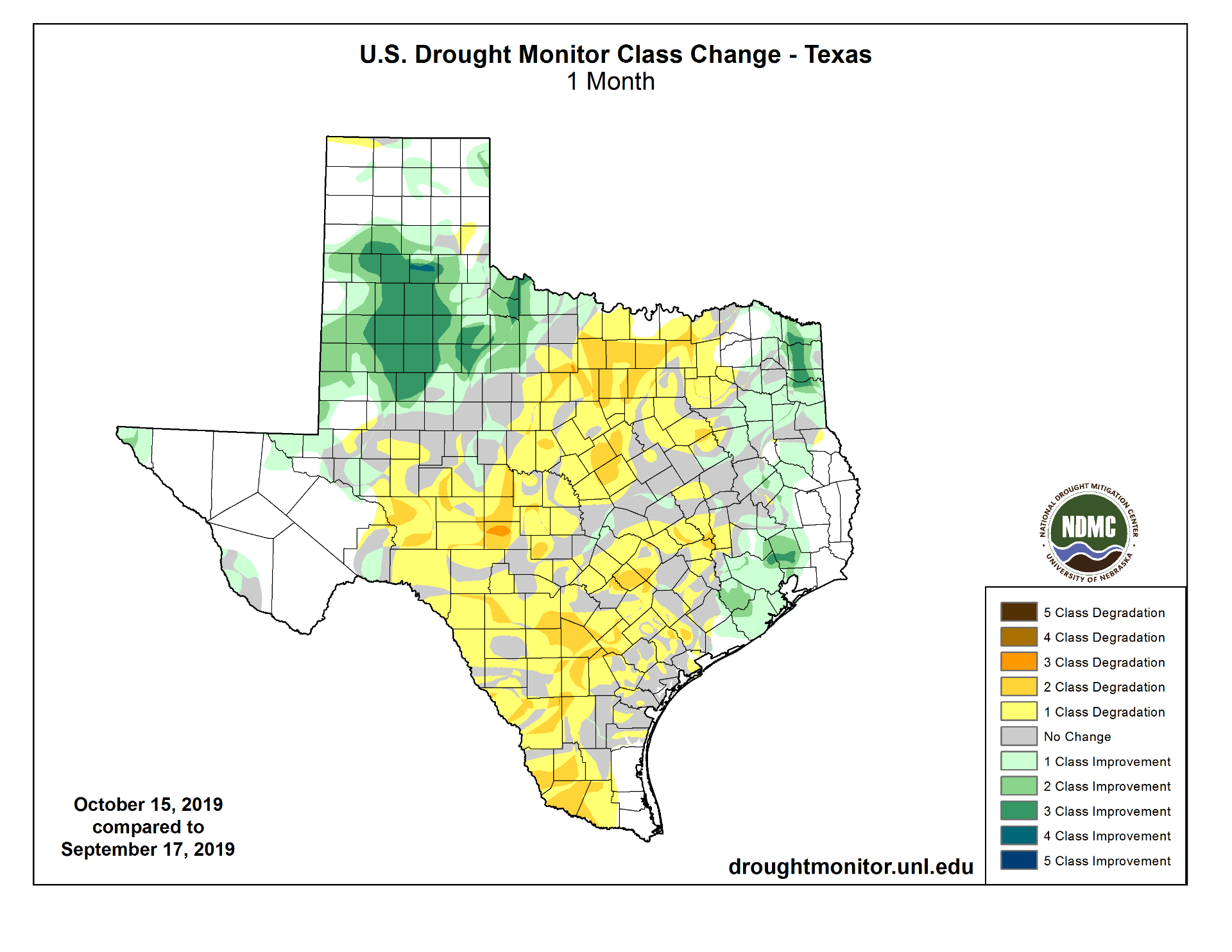
The North American Drought Monitor for September had not yet been released at the time I prepared this writeup, so here’s a badly out-of-date map of August (Figure 3a). Percent of normal precipitation in the Rio Grande watershed in Colorado, the primary source of water for Elephant Butte Reservoir, over the last 90 days shows less than normal rainfall with evidence of monsoon rains in southern New Mexico (Figure 3b).

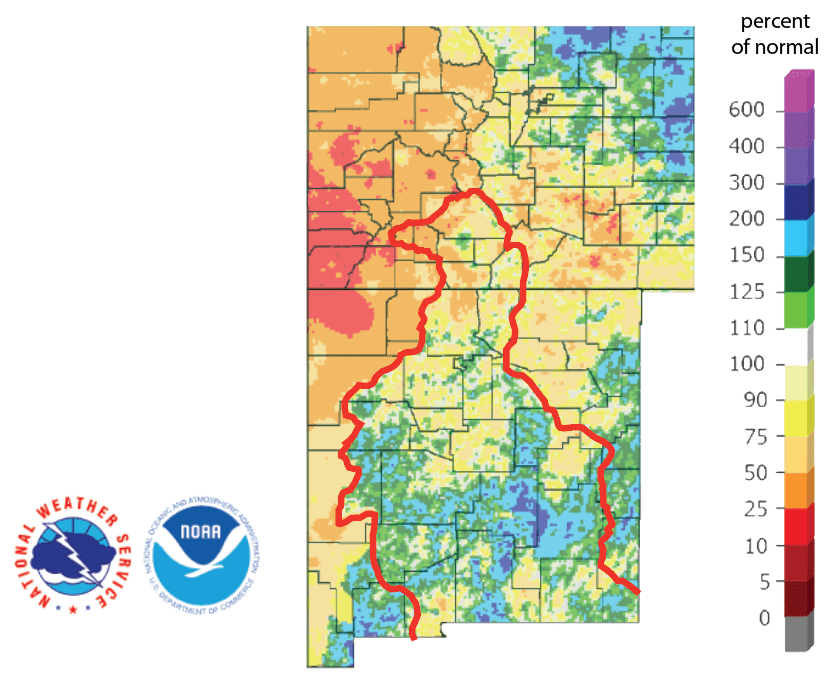
Statewide reservoir storage continued its decline, which started in July, to 81 percent full, slightly above the median storage since 1990 for this time of year (Figure 4a). Several reservoirs declined in storage over the past month, although most of the reservoirs in the eastern half of the state remain at least 80 percent full (Figure 4b). The flash drought has decreased reservoir storage in Lake Texana near Corpus Christi where storage has fallen to 20 percentage points below normal (Figure 4c).
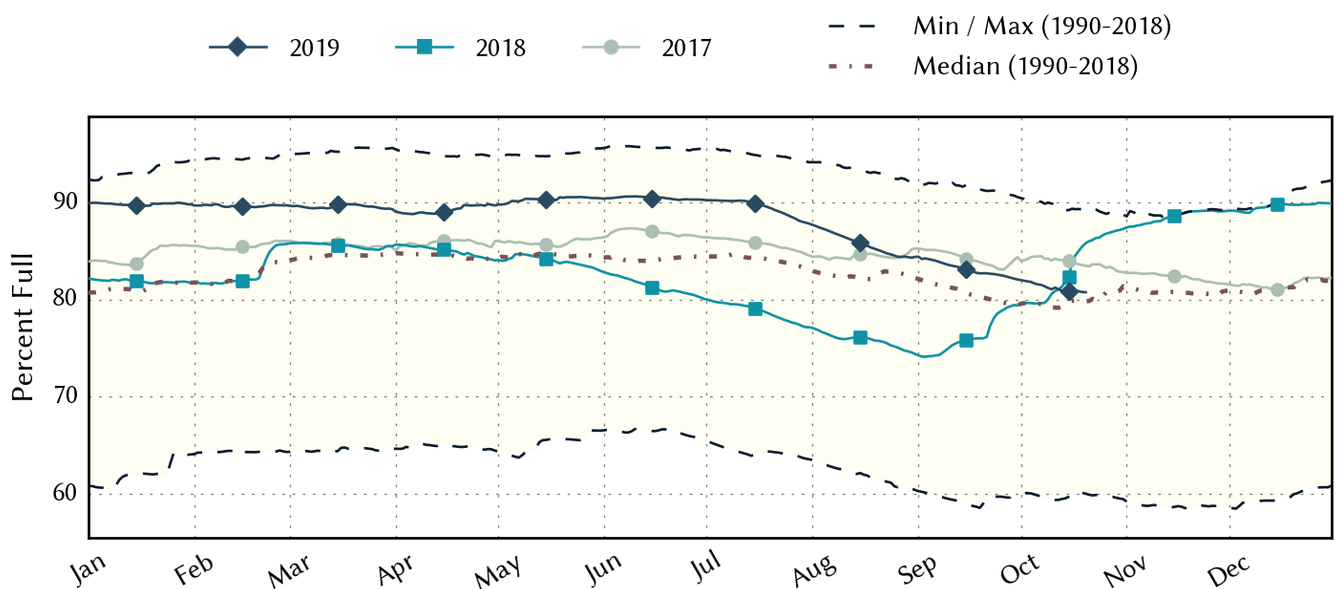
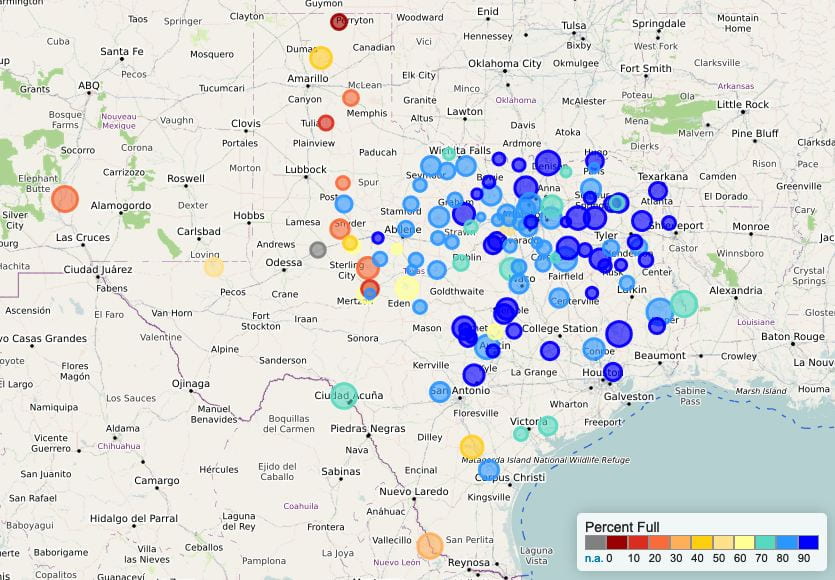

For the El Niño Southern Oscillation, we remain in neutral (La Nada) conditions (Figure 5). The Climate Prediction Center upped the odds of neutral conditions persisting through the fall from 75-percent to ~85 percent with a continued 55 to 60 percent chance of neutral conditions through the spring.

The U.S. Seasonal Drought Outlook through January 31, 2020, projects that current drought conditions will persist with drought improvement and removal in the eastern part of the state (Figure 6).
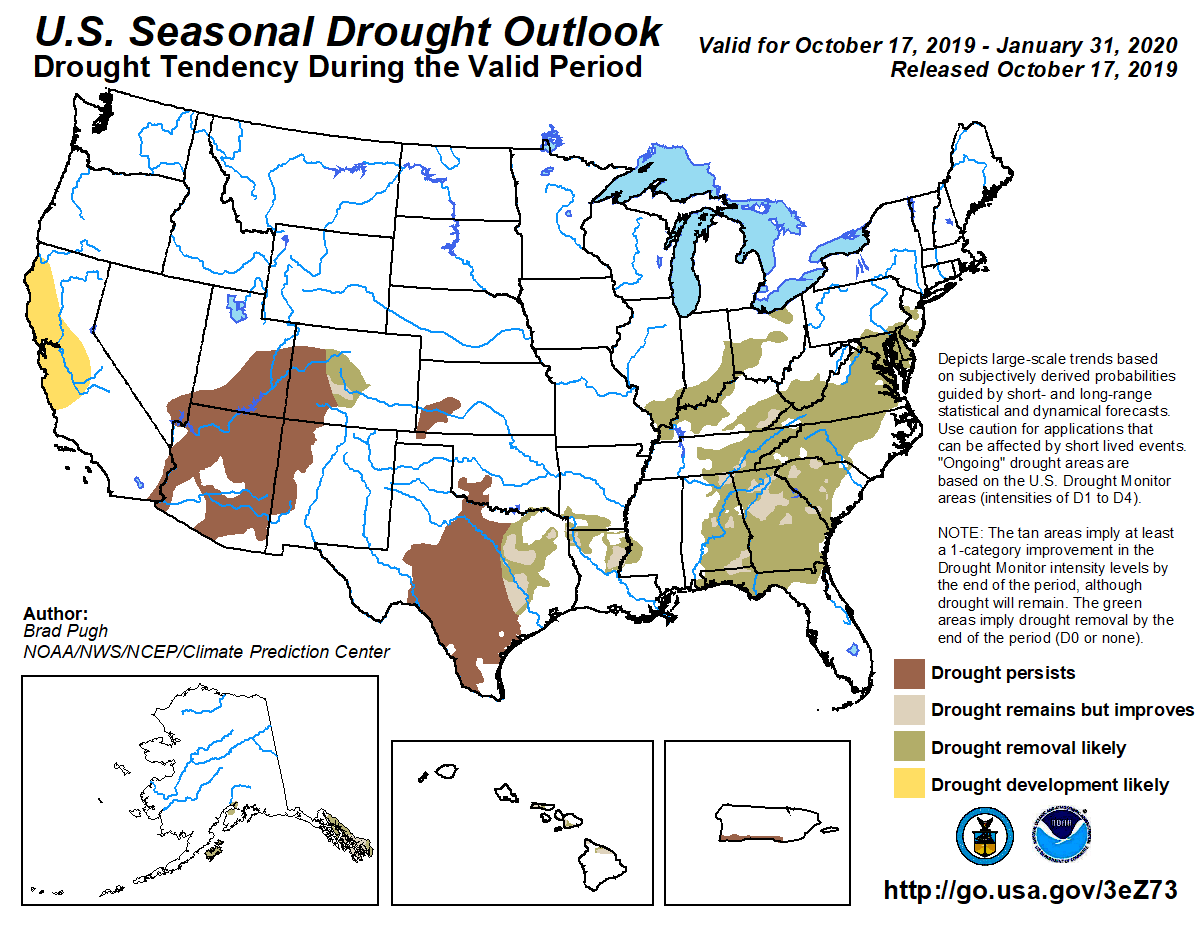
Author
 Robert Mace
Robert Mace
Interim Executive Director & Chief Water Policy Officer at The Meadows Center for Water and the Environment
Robert Mace is the Interim Executive Director and the Chief Water Policy Officer at The Meadows Center. He is also Professor of Practice in the Department of Geography at Texas State University. Robert has over 30 years of experience in hydrology, hydrogeology, stakeholder processes, and water policy, mostly in Texas.

